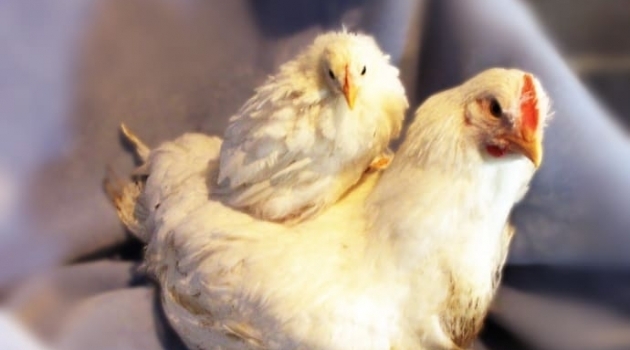Researchers focus on the genetics of rapidly growing chickens
Through targeted breeding, animal geneticists have quickly developed very rapidly growing chickens. This is one of the reasons that the price of chicken meat is so low today. Despite the major economic significance of chicken growth, very little is still known about what genetic mechanisms made it possible to produce today’s fast-growing chickens, known by the scientific name of Gallus gallus.
By using a unique experimentally bred chicken population, “the Virginia lines”, researchers at Uppsala University and Virginia Polytech, led by Örjan Carlborg, have studied the complexity of the genetic architecture that made it possible in just 50 generations to produce chickens whose weight at eight weeks of age grew by more than 15 fold compared with other chickens. The results are now described in the latest edition of the leading journal Molecular Biology and Evolution
In the study, Örjan Carlborg’s research team used two White Plymouth Rock selection lines that had been bred since 1957 to obtain high and low body weight at eight weeks of age. At this stage, the line with large hens weighed an average of 1,412 grams at eight weeks of age compared with the average weight of 170 grams for the small hens (i.e. only around 8 per cent of the high-weight line). To study the genetics behind the differences between both of the lines, the two selected lines were crossed - after 40 generations of separate selection. The chickens in this cross population were then randomly paired together for another 15 generations. This kind of cross population is a powerful tool for studying the genetics behind the differences between the crossed lines.
The study identified 22 areas in the genome that together explained more than 60 per cent of the genetic contribution to the variation in body weight in the cross between the selected lines.
“After almost 20 years of studies of the genetics behind the difference between the high- and low-weight selected lines, we are now beginning to understand more about how complex the genetics really are,” says Örjan Carlborg.
“Our experiments show that small, phenotypically homogeneous populations, which our lines come from, can also contain many genetic variants that do not create variation in the population until one begins to select them. And once that is done, the characteristics can change a great deal and quickly in response to an intensive selection pressure.”
In the study, the researchers focused specifically on seven areas in the genome that especially affect body weight, so-called quantitative trait loci or QTL. Only two of these areas were found to contain one single, well-defined region where a genetic variant from each line affected the body weight. The other five areas were more complex and contained several variants. In some cases, they were next to each other, known as linked loci, or there were more than two gene variants at one locus in at least one of the lines. The effects of some variants also varied depending on the set of genes in other places in the genetic material.
The detailed study of these loci experimentally demonstrated that what many people expected is true: in other words, that genetic adaptation during selection is often due to many genes, but at the same time that the individual loci that contribute will often be complex. This is something that has been difficult to show in natural populations, which makes the experimental populations like the Virginia lines a unique and valuable resource that provides a deeper understanding of how the amount of genetic variants that are in the entire genome together contribute to long-term selection response.
By continuing to study this population, the researchers hope to be able to continue to contribute greater understanding about how complex genetic mechanisms contribute to higher body weight in chickens and how this can be adapted to a targeted genetic selection.
“For many geneticists, the ultimate goal in a study like ours is to find how individual genes and mutations in them regulate the characteristics studied,” says Örjan Carlborg.
“Instead, we are trying to understand how all of these genetic variants jointly regulate a characteristic. Then, we can better use our information to predict how an individual with a certain genotype will behave. In the long term, we hope that this work will contribute to being able to better predict how, for example, natural populations will change in the environment, new ways of breeding animals and plants in agriculture and predicting the risk of disease for humans.”
The research project is a collaborative arrangement between Uppsala University, the Swedish University of Agricultural Sciences (SLU), and Dalarna University in Sweden, Huazhong Agricultural University in China, and Virginia Polytechnic Institute and State University in the USA.

